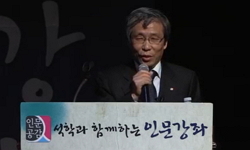이용악 시의 트랜스로컬리티 연구는 일제강점기 정치 사회적 혼란과 관련하여 당시 유민들의 디아스포라적 삶에 내재된 경계적 의미를 재고할 수 있는 가능성을 제공한다. 트랜스로컬리티...
http://chineseinput.net/에서 pinyin(병음)방식으로 중국어를 변환할 수 있습니다.
변환된 중국어를 복사하여 사용하시면 됩니다.
- 中文 을 입력하시려면 zhongwen을 입력하시고 space를누르시면됩니다.
- 北京 을 입력하시려면 beijing을 입력하시고 space를 누르시면 됩니다.

이용악 시에 나타난 유민(流民)의 트랜스로컬리티 연구 = A Study on Translocality of Drifting People in Lee Yong-ak’s Poetry
한글로보기https://www.riss.kr/link?id=A105922533
- 저자
- 발행기관
- 학술지명
- 권호사항
-
발행연도
2018
-
작성언어
Korean
-
주제어
이용악 ; 유민 ; 트랜스로컬리티 ; 트랜스이주 ; 경계 ; 두만강 ; 연해주 ; Lee Yong-ak ; drifting people ; translocality ; transmigration ; boundary ; Duman River ; Yeonhea Ju
-
등재정보
KCI등재
-
자료형태
학술저널
-
수록면
187-211(25쪽)
-
KCI 피인용횟수
3
- DOI식별코드
- 제공처
- 소장기관
-
0
상세조회 -
0
다운로드
부가정보
국문 초록 (Abstract)
이용악의 시세계에서 중심공간으로 등장하는 ‘북쪽’, ‘북방’은 고향과두만강을 거쳐 광활한 대륙과 접하고 있는 만주와 연해주까지 포괄하는 개념이다. 따라서 두만강과 연해주는 탈경계적 북방대륙으로서 트랜스로컬적 의미가 큰 공간이다. 함북의 변방지역을 오고 가는 유민은 ‘국민’이나‘민족’이라는 개념의 바깥에서 살아 가는 존재로, 북방의 초국가적인 공간에서 끊임없이 월경하며 살아갔다. 경계로서의 두만강과 대안의 땅으로서의 연해주를 통해 유민의 트랜스로컬한 삶을 살펴보고자 한다.
유민에게 두만강은 새로운 삶터를 찾아 가는데 거쳐야할 길목이었다. 도강은 국경을 넘는 위험한 행위이지만, 강 건너 그곳은 생존을 모색할 수 있는 최후의 대안공간이었다. 이용악의 아버지와 친척들은 원고향과 연해주 간의 트랜스로컬한 관계망을 만들어 간다. 그러한 관계망은 조선과 러시아라는 국가와 상관없이 국가 내의 로컬에 밀착되어 이루어진다. 또한 그들에게 원고향과 연해주는 단절된 기억과 향수가 아닌 두 지역의 문화와 로컬리티를 동시에 향유하는 트랜스로컬리티의 특성을 보인다.
유민들의 혼종적 정체성은 기원지로부터 목적지로 이동하는 과정의 산물로서, 이는 이용악 문학 공간의 본질적 요소가 된다. 트랜스로컬리티적 관점은 이와같이 이주(민)에 대한 해석에서 유의미한 결과를 이끌어 낸다. 현실과 가상에서 사람과 물자의 이동성이 활발해진 오늘날, 트랜스로컬리티는 로컬의 경계에서 일어나는 다양한 현상들을 이해하게 한다. 이것은 로컬의 경계를 가로지르는 새로운 영역으로서 로컬에 잠재된 의미를 도출해내고 세계화 시대의 거시적이고 구조적 동인에 의한 로컬의 장소성과 그곳에 거주하는 사람들의 정체성에 대해 말한다.
이용악 시의 트랜스로컬리티 연구는 일제강점기 정치 사회적 혼란과 관련하여 당시 유민들의 디아스포라적 삶에 내재된 경계적 의미를 재고할 수 있는 가능성을 제공한다. 트랜스로컬리티는 기존의 이분법적 경계구분으로는 제대로 설명하기 힘든, 이용악 시의 탈경계적 현상을 해석하고, 당대 유민들이 현실을 직시하고 희망을 찾아내는 동력 기제를 사유하는 개념이 된다.
이용악의 시세계에서 중심공간으로 등장하는 ‘북쪽’, ‘북방’은 고향과두만강을 거쳐 광활한 대륙과 접하고 있는 만주와 연해주까지 포괄하는 개념이다. 따라서 두만강과 연해주는 탈경계적 북방대륙으로서 트랜스로컬적 의미가 큰 공간이다. 함북의 변방지역을 오고 가는 유민은 ‘국민’이나‘민족’이라는 개념의 바깥에서 살아 가는 존재로, 북방의 초국가적인 공간에서 끊임없이 월경하며 살아갔다. 경계로서의 두만강과 대안의 땅으로서의 연해주를 통해 유민의 트랜스로컬한 삶을 살펴보고자 한다.
유민에게 두만강은 새로운 삶터를 찾아 가는데 거쳐야할 길목이었다. 도강은 국경을 넘는 위험한 행위이지만, 강 건너 그곳은 생존을 모색할 수 있는 최후의 대안공간이었다. 이용악의 아버지와 친척들은 원고향과 연해주 간의 트랜스로컬한 관계망을 만들어 간다. 그러한 관계망은 조선과 러시아라는 국가와 상관없이 국가 내의 로컬에 밀착되어 이루어진다. 또한 그들에게 원고향과 연해주는 단절된 기억과 향수가 아닌 두 지역의 문화와 로컬리티를 동시에 향유하는 트랜스로컬리티의 특성을 보인다.
유민들의 혼종적 정체성은 기원지로부터 목적지로 이동하는 과정의 산물로서, 이는 이용악 문학 공간의 본질적 요소가 된다. 트랜스로컬리티적 관점은 이와같이 이주(민)에 대한 해석에서 유의미한 결과를 이끌어 낸다. 현실과 가상에서 사람과 물자의 이동성이 활발해진 오늘날, 트랜스로컬리티는 로컬의 경계에서 일어나는 다양한 현상들을 이해하게 한다. 이것은 로컬의 경계를 가로지르는 새로운 영역으로서 로컬에 잠재된 의미를 도출해내고 세계화 시대의 거시적이고 구조적 동인에 의한 로컬의 장소성과 그곳에 거주하는 사람들의 정체성에 대해 말한다.
다국어 초록 (Multilingual Abstract)
The `north` or ‘northern region’ that appears as a central space in the Lee Yong-ak’s poetic world stretches its reach beyond his hometown and the Duman River to Manchuria and the Yeonhea Ju. Therefore, the Duman River and the Yeonhea Ju hold translocal meanings as a transboundary northern continent. The drifting people who travelled around a backwater of North Hamgyeong Province, lived outside the boundary of `people` or `nation` but rather in the transnational space of the north while continuously crossing the border. This study intends to examine the translocal life of the drifting people through the Dumen River as a boundary and the Yeonhea Ju as an alternative land.
To the drifting people, the Duman River was a crossroad that they had to go through on their way to finding a new life. Crossing the river, which is basically crossing the border, was a dangerous attempt but seeking to reach the land across the river was the last option for their survival. Lee Yong-ak`s father and relatives create a translocal network between their hometown and the Yeonhea Ju. Such network is built in close contact with the locals within a nation regardless of the counties of Korea and Russia. In addition, the hometown and the Yeonhea Ju feature translocal characteristics that embrace and enjoy the culture and the locality of the both regions instead of the disconnected memory and nostalgia.
The hybrid identities of the drifting people are a result of the process of migration from their place of origin to a new destination, which is an essential element of the Lee Yong-ak’s literary world. The translocal perspective, in this regard, gives rise to meaningful results in interpreting the migration (migrating people). The circumstances today that allow the active and easy mobility of people and things both in reality and in virtual world make us understand the various phenomena that occur at local boundaries. This brings out the meanings latent in the local as a new territory that traverses the local boundaries and speaks of the placeness of the local by the macroscopic and structural driver of the globalization era and the identities of the people who live in there.
The study on the translocality of Lee Yong-ak’s poems allows one to consider the boundary implications implicit in diasporic life of the drifting people during the Japanese colonial period in association with the political and social confusion at th...
The study on the translocality of Lee Yong-ak’s poems allows one to consider the boundary implications implicit in diasporic life of the drifting people during the Japanese colonial period in association with the political and social confusion at the time. The translocality serves as a concept that interprets the cross-boundary phenomenon of Yong-ak’s poems, which is hard to explain from the existing dichotomic demarcation and to reason the power mechanism that allows the drifting people of the time to face the reality and seek hope.
The `north` or ‘northern region’ that appears as a central space in the Lee Yong-ak’s poetic world stretches its reach beyond his hometown and the Duman River to Manchuria and the Yeonhea Ju. Therefore, the Duman River and the Yeonhea Ju hold translocal meanings as a transboundary northern continent. The drifting people who travelled around a backwater of North Hamgyeong Province, lived outside the boundary of `people` or `nation` but rather in the transnational space of the north while continuously crossing the border. This study intends to examine the translocal life of the drifting people through the Dumen River as a boundary and the Yeonhea Ju as an alternative land.
To the drifting people, the Duman River was a crossroad that they had to go through on their way to finding a new life. Crossing the river, which is basically crossing the border, was a dangerous attempt but seeking to reach the land across the river was the last option for their survival. Lee Yong-ak`s father and relatives create a translocal network between their hometown and the Yeonhea Ju. Such network is built in close contact with the locals within a nation regardless of the counties of Korea and Russia. In addition, the hometown and the Yeonhea Ju feature translocal characteristics that embrace and enjoy the culture and the locality of the both regions instead of the disconnected memory and nostalgia.
The hybrid identities of the drifting people are a result of the process of migration from their place of origin to a new destination, which is an essential element of the Lee Yong-ak’s literary world. The translocal perspective, in this regard, gives rise to meaningful results in interpreting the migration (migrating people). The circumstances today that allow the active and easy mobility of people and things both in reality and in virtual world make us understand the various phenomena that occur at local boundaries. This brings out the meanings latent in the local as a new territory that traverses the local boundaries and speaks of the placeness of the local by the macroscopic and structural driver of the globalization era and the identities of the people who live in there.
목차 (Table of Contents)
- 국문초록
- 1. 머리말
- 2. 유민의 대안적 이동과 탈향의 경계 두만강
- 3. 제2의 고향 연해주와 유민의 혼종적 정체성
- 4. 맺음말
- 국문초록
- 1. 머리말
- 2. 유민의 대안적 이동과 탈향의 경계 두만강
- 3. 제2의 고향 연해주와 유민의 혼종적 정체성
- 4. 맺음말
- 참고문헌
- Abstracts
참고문헌 (Reference)
1 이경희, "李庸岳 詩 硏究 -北方情緖 모티브를 中心으로-" 인하대학교 대학원 2007
2 경흥군지편찬위원회, "함경도 경흥군지" 동지편찬위원회 1988
3 이길주, "한국 현대시에 나타난 북방, 시베리아-유라시아 디스토피아-유토피아 공간인식-이용악의 북방서사와 공간 인식을 중심으로" 대한민국예술원 (53) : 2014
4 이근화, "한국 현대시에 나타난 ‘북방’과 낭만적 서정성" 한경대학교 2010
5 곽효환, "한국 근대시의 북방의식 연구 : 김동환, 백석, 이용악을 중심으로" 고려대학교 대학원 2007
6 이유혁, "트랜스로컬리티의 개념에 대해서" (13) : 2015
7 이유혁, "트랜스로컬리티와 경계의 재해석" 소명출판 2017
8 이상봉, "트랜스-로컬리티: 포스트모던의 대안적 공간정치" 21세기정치학회 24 (24): 51-74, 2014
9 이상봉, "탈근대, 공간의 재영역화와 로컬ㆍ로컬리티" 한국민족문화연구소 (32) : 1-30, 2008
10 임채완, "코리안 디아스포라-이주루트와 기억" 북코리아 2013
1 이경희, "李庸岳 詩 硏究 -北方情緖 모티브를 中心으로-" 인하대학교 대학원 2007
2 경흥군지편찬위원회, "함경도 경흥군지" 동지편찬위원회 1988
3 이길주, "한국 현대시에 나타난 북방, 시베리아-유라시아 디스토피아-유토피아 공간인식-이용악의 북방서사와 공간 인식을 중심으로" 대한민국예술원 (53) : 2014
4 이근화, "한국 현대시에 나타난 ‘북방’과 낭만적 서정성" 한경대학교 2010
5 곽효환, "한국 근대시의 북방의식 연구 : 김동환, 백석, 이용악을 중심으로" 고려대학교 대학원 2007
6 이유혁, "트랜스로컬리티의 개념에 대해서" (13) : 2015
7 이유혁, "트랜스로컬리티와 경계의 재해석" 소명출판 2017
8 이상봉, "트랜스-로컬리티: 포스트모던의 대안적 공간정치" 21세기정치학회 24 (24): 51-74, 2014
9 이상봉, "탈근대, 공간의 재영역화와 로컬ㆍ로컬리티" 한국민족문화연구소 (32) : 1-30, 2008
10 임채완, "코리안 디아스포라-이주루트와 기억" 북코리아 2013
11 강석화, "조선후기 함경도와 북방영토의식" 경세원 2000
12 조윤경, "접두어 ‘trans-’의 인문학적 함의 - 탈경계 인문학Trans-Humanities 연구를 위한 개념 고찰을 중심으로" 이화인문과학원 3 (3): 5-27, 2010
13 장석주, "장소의 탄생" 작가정신 2006
14 부산대학교 한국민족문화연구소, "이주와 로컬리티의 재구성" 소명출판 2013
15 윤영천, "이용악시전집" 창작과 비평사 2000
16 곽효환, "이용악 전집" 소명출판 2015
17 한아진, "이용악 시의 서사성과 장소 체험 : 시적 표상 공간의 전개 양상을 중심으로" 동국대학교 대학원 2014
18 이길연, "이용악 시의 공동체 의식 상실과 공간 심상" 우리어문학회 (26) : 173-196, 2006
19 박용찬, "이용악 시의 공간적 특성 연구" 한국어문학회 (89) : 259-287, 2005
20 박수정, "이용악 시의 공간상징 연구" 부경대학교 대학원 2004
21 임주연, "이용악 시의 공간 이미지에 대한 고찰" 충북대학교 교육대학원 2013
22 강연호, "이용악 시의 공간 연구" 현대문학이론학회 (23) : 79-105, 2004
23 조남주, "이용악 시의 공간 연구" 연세대학교 대학원 2006
24 심재휘, "이용악 시와 공간상상력" 현대문학이론학회 (53) : 223-247, 2013
25 전병준, "이용악 시에 나타난 고향의 의미 연구" 현대문학이론학회 (34) : 27-48, 2008
26 이경수, "이용악 시에 나타난 ‘길’의 표상과 ‘고향-조선’이라는 심상지리" 우리문학회 (27) : 239-268, 2009
27 이길연, "이용악 시에 나타나는 북방정서와 디아스포라 공간의식" 국제어문학회 2008
28 최은자, "이용악 시 연구 : 공간을 나타내는 시어를 중심으로" 고려대학교 한국어문교육연구소 (17) : 2015
29 김재홍, "이용악" 한길사 2008
30 이경희, "북방의 시인 이용악" 국학자료원 2007
31 요시하라 나오키, "모빌리티와 장소" 심산 2010
32 존 어리, "모빌리티" 아카넷 2016
33 이재성, "로컬리티의 연구동향과 인문학 연구의 새로운 방향" 한국학연구원 (42) : 95-120, 2011
34 이명화, "노령지방에서의 한인 민족주의교육운동" 3 : 1989
35 임수영, "고향의 소멸과 재생 - 1930년대 중후반 시의 '고향' 연구" 한국시학회 (48) : 201-226, 2016
36 배항섭, "19세기 후반 함경도 주민들의 연해주 이주와 仁政 願望" 호서사학회 (53) : 405-447, 2009
37 박노자, "19世紀後半韓人의 露領移民의 初期段階(1861-1869)" 6 : 1998
38 이명찬, "1930년대 한국시의 근대성" 소명출판 2000
동일학술지(권/호) 다른 논문
-
성인 농인을 위한 한국수어 교육과정 개발의 방향과 실제
- 국어문학회
- 윤석민(Youn, soegmin)
- 2018
- KCI등재
-
- 국어문학회
- 이태영(Lee tae yeong)
- 2018
- KCI등재
-
- 국어문학회
- 김도형(Kim, Do-Hyeong)
- 2018
- KCI등재
-
- 국어문학회
- 김소현(Kim, so-hyeon)
- 2018
- KCI등재
분석정보
인용정보 인용지수 설명보기
학술지 이력
| 연월일 | 이력구분 | 이력상세 | 등재구분 |
|---|---|---|---|
| 2027 | 평가예정 | 재인증평가 신청대상 (재인증) | |
| 2021-03-11 | 학술지명변경 | 외국어명 : 미등록 -> Korean Language and Literature |  |
| 2021-01-01 | 평가 | 등재학술지 유지 (재인증) |  |
| 2018-01-01 | 평가 | 등재학술지 유지 (등재유지) |  |
| 2015-01-01 | 평가 | 등재학술지 선정 (계속평가) |  |
| 2013-01-01 | 평가 | 등재후보학술지 유지 (기타) |  |
| 2011-01-01 | 평가 | 등재후보학술지 선정 (신규평가) |  |
| 2010-03-01 | 평가 | 등재후보 탈락 (기타) | |
| 2008-01-01 | 평가 | 등재후보 1차 FAIL (등재후보1차) |  |
| 2006-01-01 | 평가 | 등재후보학술지 선정 (신규평가) |  |
학술지 인용정보
| 기준연도 | WOS-KCI 통합IF(2년) | KCIF(2년) | KCIF(3년) |
|---|---|---|---|
| 2016 | 0.51 | 0.51 | 0.55 |
| KCIF(4년) | KCIF(5년) | 중심성지수(3년) | 즉시성지수 |
| 0.51 | 0.5 | 0.935 | 0.16 |




 KCI
KCI DBpia
DBpia







